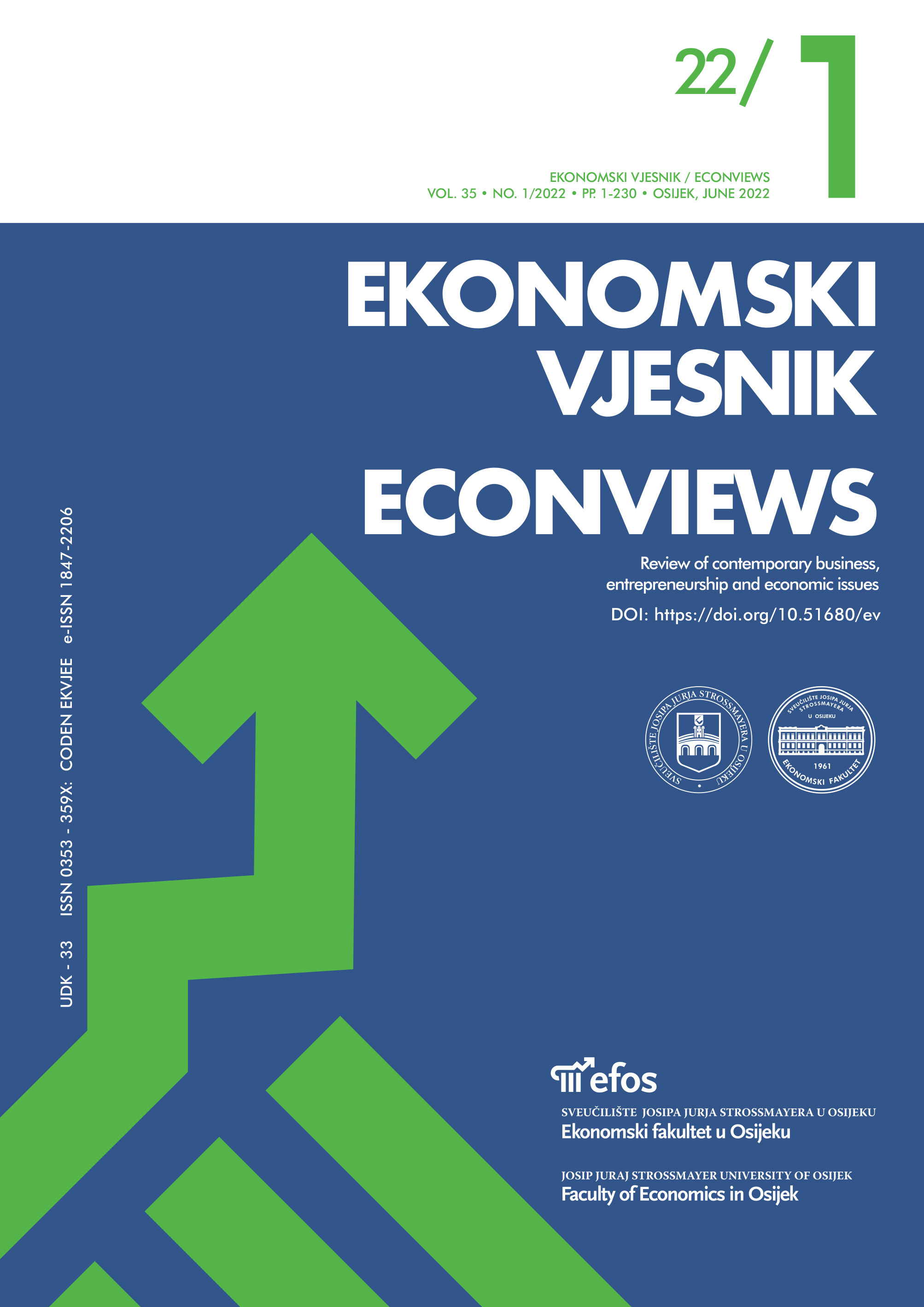Quantifying the optimal long-run level of government expenditures in Turkey: 1968-2019
Quantifying the optimal long-run level of government expenditures in Turkey: 1968-2019
Author(s): Cansin Kemal Can, Emin Efecan AktaşSubject(s): Economy, National Economy, Economic history, Political economy, Post-War period (1950 - 1989), Transformation Period (1990 - 2010), Present Times (2010 - today)
Published by: Sveučilište Josipa Jurja Strossmayera u Osijeku, Ekonomski fakultet u Osijeku
Keywords: armey curve; optimal size of government; output level; public expenditure; ARDL;
Summary/Abstract: Purpose: This paper gauges the nexus between government expenditures and the output level in Turkey. Our primary research objective is to evaluate the extent to which government expenditures give rise to an increase in GDP taking the Armey curve theory as a basis for the analysis. Succinctly speaking, this theory suggests that the expansionary impact of government expenditure on income level has diminishing nature and beyond a certain threshold public spending impairs rather than accelerates economic activities for several reasons including crowding out, rent-seeking, tax hikes, and public debt surges.Methodology: In order to test the validity of this theory, we use a dataset with annual frequency covering the 1968-2019 period, which is the longest dataset used to carry out this analysis in the literature for Turkey. We set up an ARDL model to estimate the long-run coefficients required for quantifying the optimal level of government spending in Turkey.Results: According to our findings, the estimated function exhibits a concave down functional form, which implies a diminishing marginal effect of government spending on GDP, suggesting thereby that the Armey curve theory is valid for Turkey. In addition, even though government expenditure has topped out in recent years, it is still below the GDP maximising optimal level, which indicates that there is sufficient room for expansionary fiscal policies, with the caveat of a potential negative marginal impact on GDP once the optimal threshold is exceeded.Conclusion: The long-run coefficients from the ARDL estimation reveal that despite a consistent upward trend, government expenditures are still below their optimal level, which implies that there is fiscal space available to the government as far as output maximisation is concerned. However, government expenditures have been on a downward trend recently, which is contrary to output maximisation.
- Issue Year: 35/2022
- Issue No: 1
- Page Range: 69-86
- Page Count: 18
- Language: English

